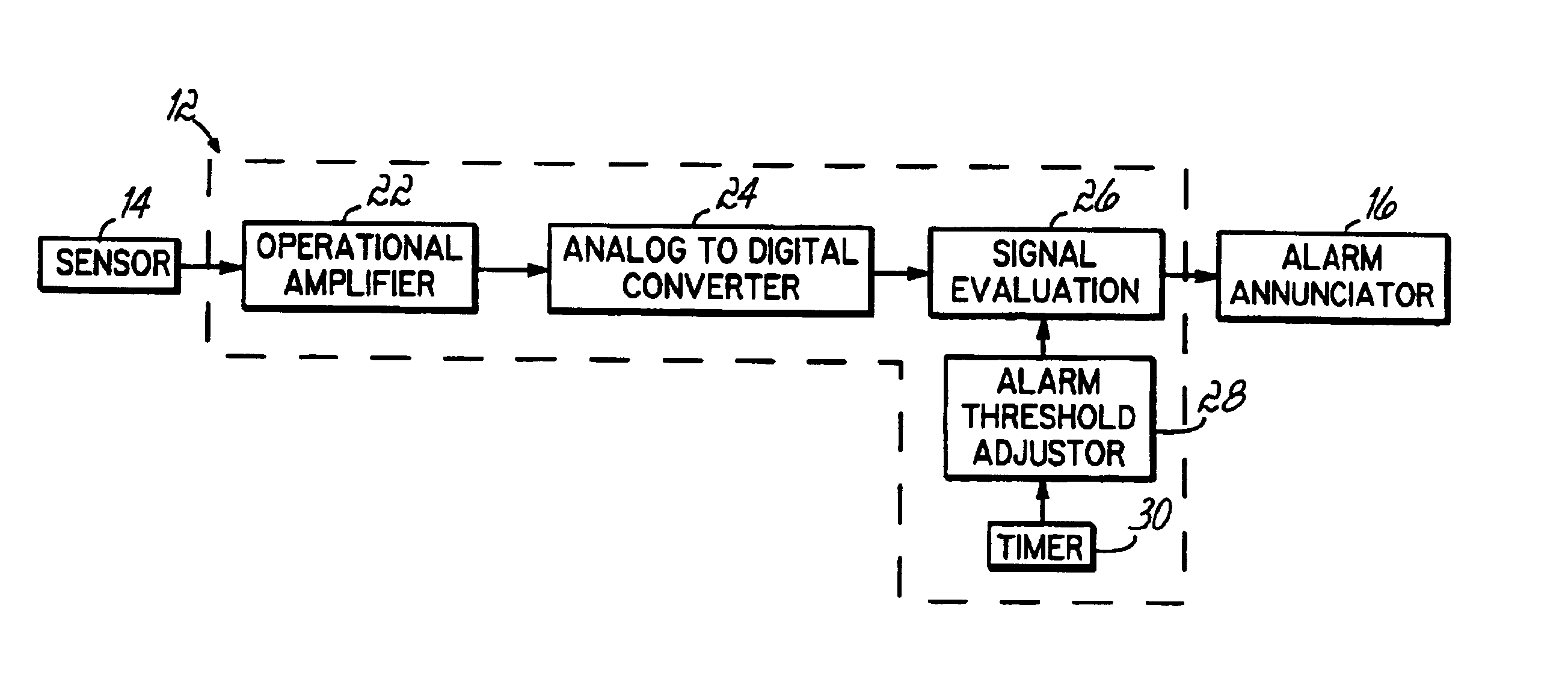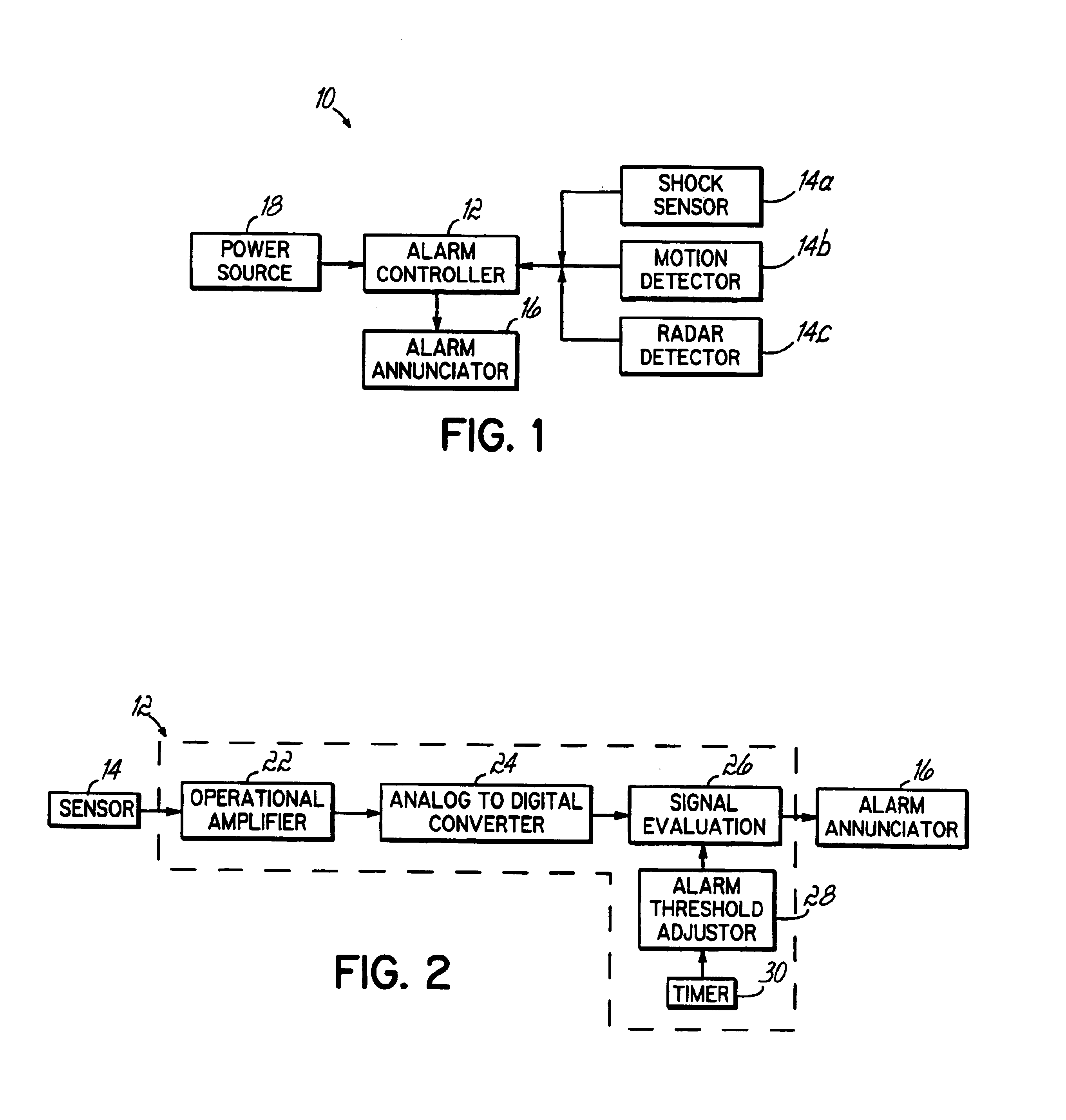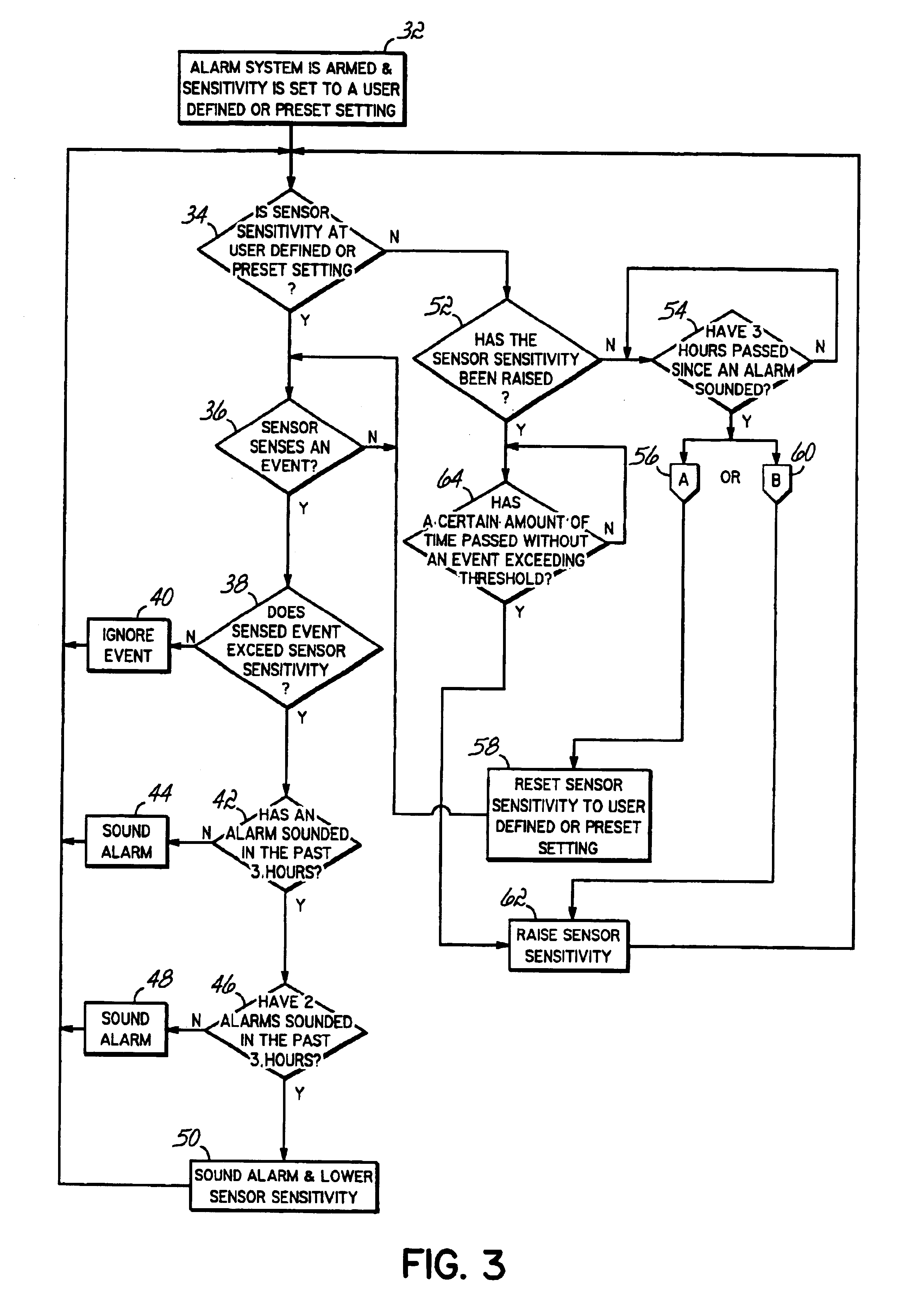Self-adjusting alarm system
a self-adjusting, alarm system technology, applied in the direction of anti-theft devices, instruments, mechanical vibrations of burglar alarms, etc., can solve the problems of triggering a false alarm on a vehicular, home, or business security system, non-intrusive and harmless contact or vibrations to a vehicle, etc., to improve the security of vehicles, homes, and reduce the number of false alarm annunciations.
- Summary
- Abstract
- Description
- Claims
- Application Information
AI Technical Summary
Benefits of technology
Problems solved by technology
Method used
Image
Examples
Embodiment Construction
[0021]A block diagram of an alarm system 10 incorporating the present invention is shown in FIG. 1. That system 10 includes an alarm controller 12 that is coupled to a shock sensor 14a, a motion detector 14b, and a radar detector 14c. The alarm controller 12 is also coupled to an alarm annunciator 16 which emits an alarm in response to an alarm signal from the alarm controller 12. The alarm emitted by the alarm annunciator 16 may be a siren, bell, vocal command, chirp, beep, warning light, or the like, or any combination thereof. The alarm controller 12 receives its power from a power source 18 which, in a vehicle, is typically the vehicle's battery, or, in a home or business, is typically the standard household current. The power source 18 may also include a backup battery source in the event a vehicle's main battery is inoperative or household current is unavailable for a building's alarm system. The use of a backup battery or rechargeable super capacitor is typically done to avoi...
PUM
 Login to View More
Login to View More Abstract
Description
Claims
Application Information
 Login to View More
Login to View More - R&D
- Intellectual Property
- Life Sciences
- Materials
- Tech Scout
- Unparalleled Data Quality
- Higher Quality Content
- 60% Fewer Hallucinations
Browse by: Latest US Patents, China's latest patents, Technical Efficacy Thesaurus, Application Domain, Technology Topic, Popular Technical Reports.
© 2025 PatSnap. All rights reserved.Legal|Privacy policy|Modern Slavery Act Transparency Statement|Sitemap|About US| Contact US: help@patsnap.com



